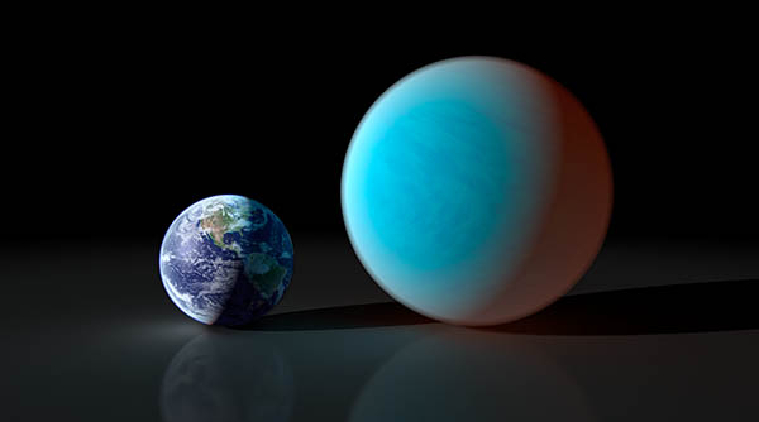Science & Technology
New Super-Earth Planet
- 19 May 2020
- 4 min read
Why in News
Recently, scientists have discovered a rare new Super-Earth planet. It is among only a handful of extra-solar planets that have been detected with both sizes and orbits close to that of Earth.
- An exoplanet or extrasolar planet is a planet outside the Solar System.
Key Points
- Mass :
- Host Star: The host star of the Super-Earth’s system has about 10% the mass of the Sun. The lower mass of the host star makes a ‘year’ on the planet of approximately 617 days.
- Super-Earth Planet: The planet is expected to have a mass between the Earth’s mass and that of Neptune.
- Orbit:
- With reference to the Solar system, the Super-Earth planet would orbit at a radius anywhere between that of Venus and Earth in our solar system.
- Planet Discovery:
- The Super-Earth planet has been discovered using the gravitational microlensing technique.
- Gravitational microlensing is an astronomical phenomenon due to the gravitational lens effect. It can be used to detect objects that range from the mass of a planet to the mass of a star, regardless of the light they emit.
- The microlensing effect is rare, with only about one in a million stars in the galaxy being affected at any given time.
- Furthermore, such type of observation does not repeat, and the probabilities of catching a planet at the same time are extremely low.
- The other methods for exoplanets discovery include:
- Radial Velocity Method: The planet causes the parent star to wobble around in its orbit, and as the planet moves to and fro, it changes the color of the light we see.
- Transit Method: When an exoplanet passes in front of its star, some of the starlight passes through its atmosphere. Scientists can analyze the colors of this light in order to get valuable clues about its composition.
- Direct Image Method : The direct image can take pictures of exoplanets by removing the glare of the stars they orbit.
- Astrometry: The orbit of the planet can cause a star to wobble around in spaces in relation to nearby stars in the sky. This method is quite similar to the Radial Velocity method. However, here scientists take a series of images of a star and some of the other stars that are near it in the sky. In each picture, they compare the distances between these reference stars and the star they're checking for exoplanets.
Exoplanet
- An exoplanet or extrasolar planet is a planet outside the Solar System. The first confirmation of detection of exoplanets occurred in 1992.
- Exoplanets are very hard to see directly with telescopes. They are hidden by the bright glare of the stars they orbit. So, astronomers use other ways to detect and study exoplanets such as looking at the effects these planets have on the stars they orbit.






